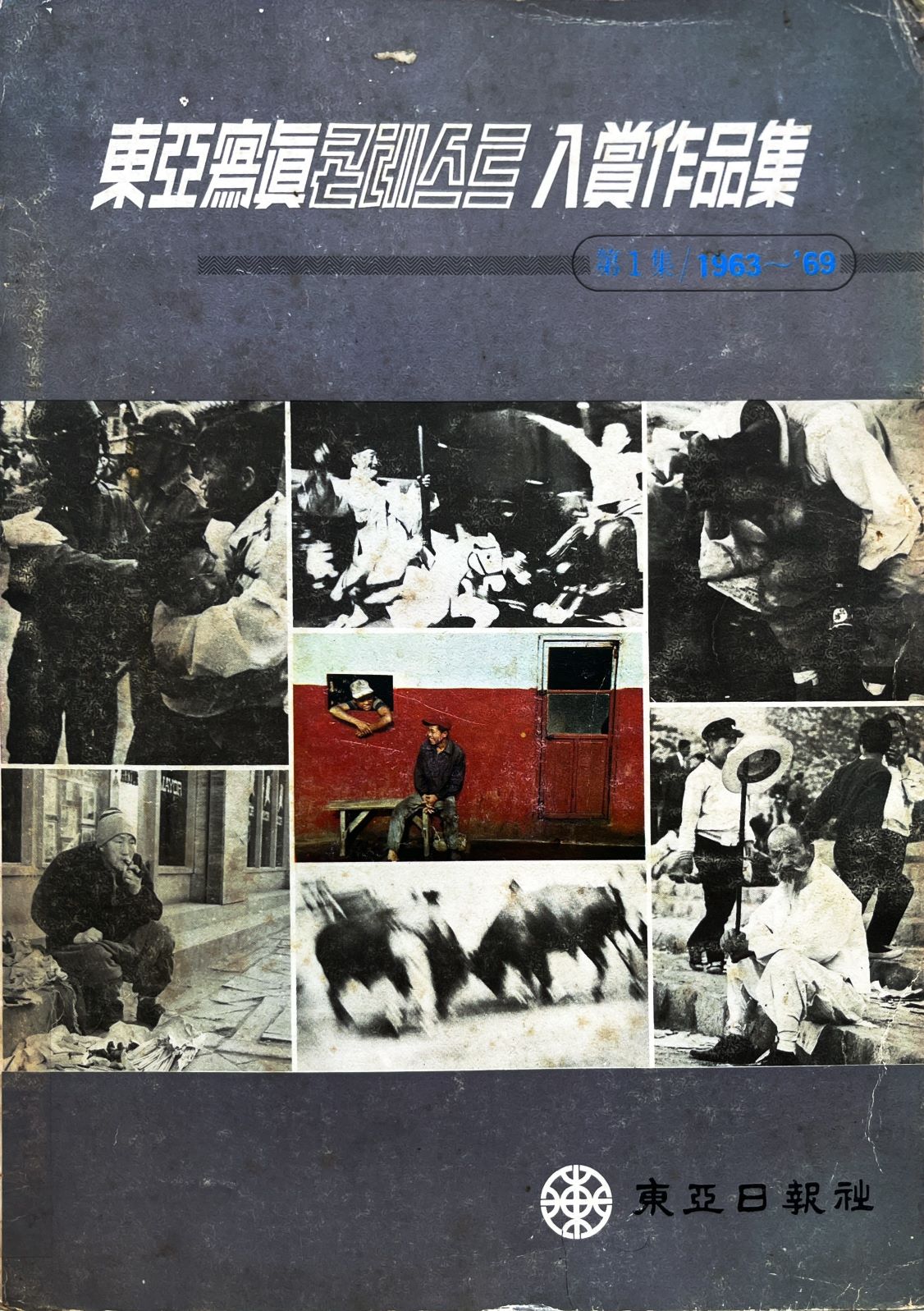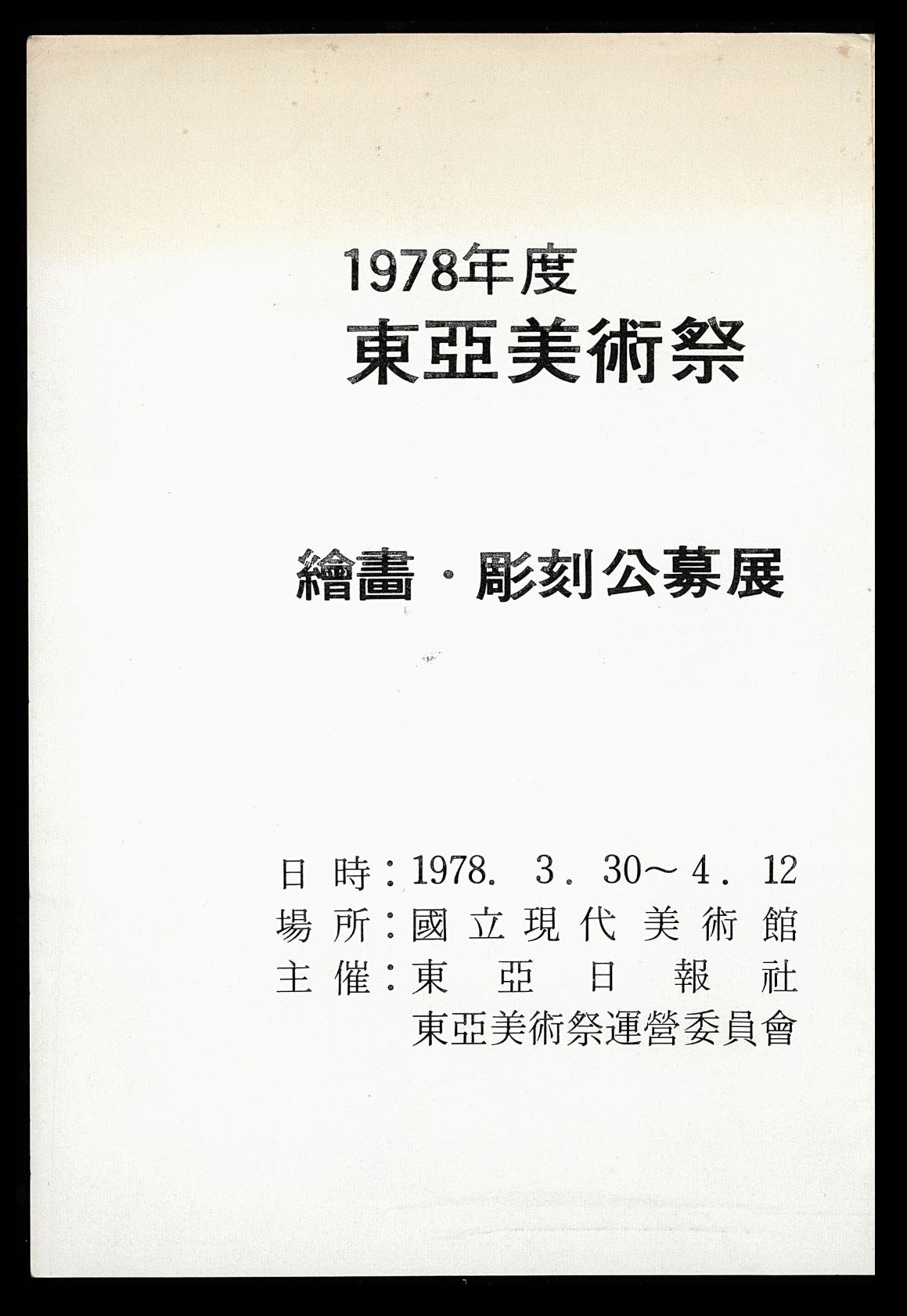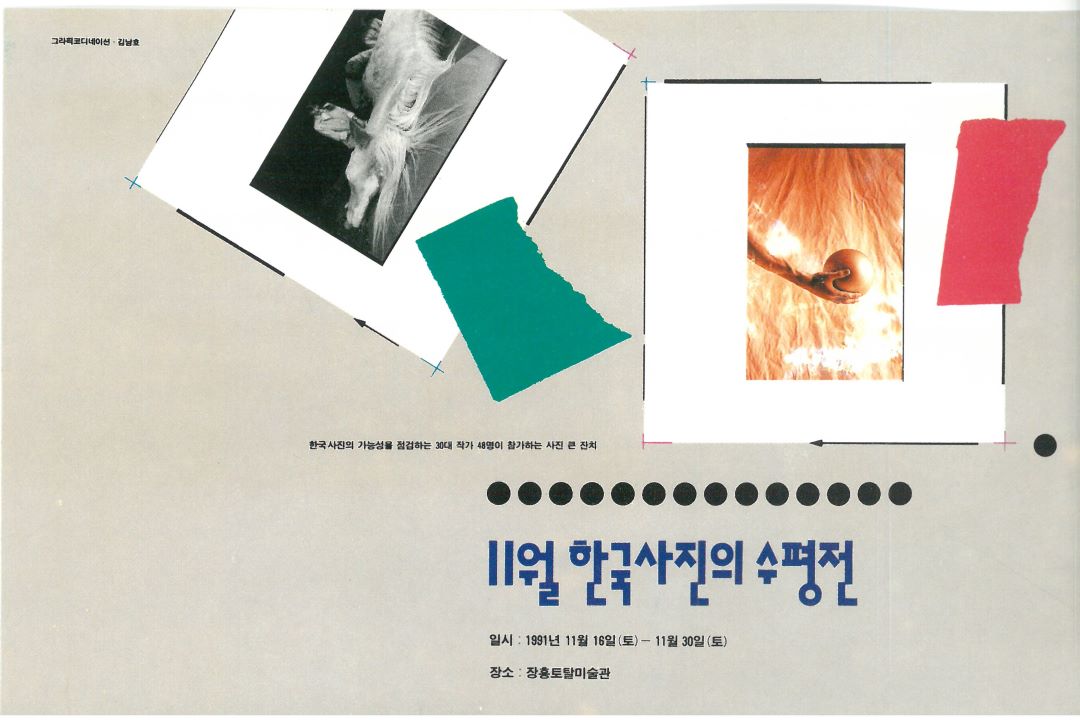
Collection of Prize-Winning Works from Dong-A Photo Contest, (Seoul: Dong-A Ilbo), 1970, MMCA Art Library Collection, Gift of Kim Ja-myeong
Dong-A Photo Contest
* Source: Multilingual Glossary of Korean Art. Korea Arts Management Service
Related
-

Contemporary photography
Contemporary photography differs from a modernist approach to photography that highlighted the technical qualities of the image. Robert Frank’s photograph collection The American published in 1959, is considered a turning point in indicating a new style based on idiosyncratically cropped images and unusual focus. Contemporary photography became prevalent when conceptual art emerged between the 1960s and the 1970s. The New Wave of the Photography exhibition, which opened at the Walker Hill Art Center in Seoul on May 18th, 1988, is considered as marking the starting point of Korean contemporary photography. The Horizon of Korean Photography exhibition at the Total Museum of Contemporary Art in Jangheung, Gyeonggi-do in November 1991 provided a further turning point. The founding of galleries specializing in photography, including the Timespace, Pine Hill Gallery, and Hanmadang Gallery, has also contributed greatly to the popularity of contemporary photography in Korea. Over the last 30 years, many foreign-educated photographers like Koo Bohnchang, Kim Daesoo, Lee Juyong, Lim Youngkyun, Han Okran, and Choi Kwangho have returned to Korea and released works reflecting new trends in the medium and further enhancing its national status as a contemporary art form.
-

Dong-A Art Festival
An exhibition launched in 1978 by the Dong-A Ilbo newspaper company and the Dong-A Broadcasting System, Dong-A Art Festival aimed to discover new emerging artists through the art contest. Along with the JoongAng Fine Arts Prize that the JoongAng Ilbo newspaper company started in the same year, it became firmly established as a doorstep for emerging artists in the 1980s and 1990s. This exhibition was in line with the Dong-A Photo Contest founded in 1963 by Dong-A Ilbo and the Seoul International Print Biennale founded in 1970. The fields of the Dong-A Art Festival kept changing. It had been held biannually with crafts, calligraphy, and photography separated from painting and sculpture. In the 1990s, in even-numbered years the festival held competitions in four fields including painting and sculpture, whereas in odd-numbered years it held competitions in calligraphy, seal engraving, and literati painting. However, school ties and personal connections through associations in the art world affected the judging process, thus undermining the authority of the festival. Moreover, as artists debuted through diverse means such as solo exhibitions, the Dong-A Art Festival changed from a call for works to a call for exhibition plans in 2006. Since then, a newly organized exhibition has been selected every year through a competition, attracting attention, but it was abolished in 2014.
-

National Art Exhibition
A government-hosted exhibition held 30 times from 1949 to 1981, also known by the shorter name Gukjeon. Following national independence, the exhibition was the primary means for young and emergent Korean artists to achieve recognition. The influence of the exhibition declined as a result of the emergence of non-figurative art during the 1970s, the increased opportunities for artists to participate in overseas exhibitions, and the rise of private exhibitions and galleries.
Find More
-

Sajin Bipyung
Sajin Bipyung was a quarterly journal of photographic criticism and theory, published in 1998 by Im Hyangja. Starting with its inaugural fall issue, 13 issues were published until 2003 by the publishing company Timespace in Chungmuro, Seoul. Kim Seunggon was an editor-in-chief, and Lee Kyungmin served as a member of the editorial committee. In the late 1990s, Korean photography culture developed substantively, and photography came to be considered as art. As a result, there was a call for the establishment of a self-sustaining critical culture in the photography industry. Therefore, Sajin Bipyung can be evaluated as a professional magazine founded with the aim of creating a culture of criticism of Korean photography and actively introducing critical writing to establish a photography forum. It was composed of articles about special topics, exhibitions, introduction to artists’ portfolios, highlights discussing timely critical topics, interviews of artists and their works, ideas, and philosophy, exhibition reviews, and an information section. It also promoted and supported emerging critics by selecting the Photo Criticism Award every year and sought to promote photo criticism by publishing awarded works in the paper.
-

Horizon of Korean Photography
A three-part exhibition held in 1991, 1992, and 1994. The word “Horizon” in the title was used to suggest that all artists can equally claim the medium of photography as their own, and participate free from all hierarchical structures. The first exhibition entitled November Horizon of Korean Photography was held from November 16 to 30, 1992 at the Total Gallery in Jangheung. The second exhibition lasted from November 28 to December 7 1992 and was held at the Seoul Museum of Art under the title November Horizon of Korean Photography: The Eye of Asia. The third exhibition, Horizon of Korean Photography, ’94: The Eye of the World, was held from August 17 to 23, 1994 at the Gongpyeong Art Center. The first exhibition featured 48 young artists who were all born around 1960. The second and third exhibitions featured 59 artists each, including both Korean and overseas photographers. Kim Seung-gon, who planned the exhibition, stated the purpose of the exhibition in the preface. For him, the exhibition was meant to recognize changes in artistic sensibility and the value system common to the new generation from the 1980s. In addition, it was designed to examine Korean art and to expand the context of contemporary art. The exhibition featured not only photography, but a wide manner of expressive artwork including painting, sculpture, and installations. It also provided a useful venue for critical discourse on contemporary issues of photography for artists and critics from Asia and Europe.






